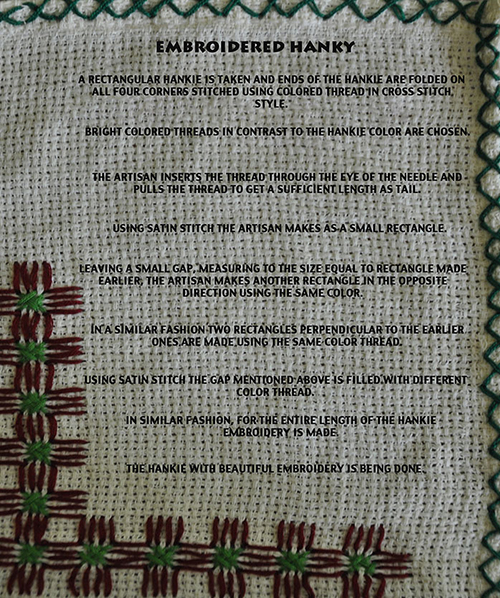For making an embroidered handkerchief, a finely woven piece of rectangular hankie is taken. The hankie edges are folded on all four sides and stitched using a colored thread in a cross-stitch style. Cross-stitch is a form of sewing and a popular form of counted thread embroidery in which X-shaped stitches in a tiled, raster-like pattern are used to form a picture. Cross-stitch is the oldest form of embroidery and can be found all over the world. There are various kinds of stitching used in embroidery like Running stitch, Cross stitch, Split stitch, Stem stitch, Satin stitch, Chain stitch, etc.
Bright colored cotton threads, in contrast to the hankie color, are chosen. The artisan inserts the thread into the needle. The artisan starts to embroider from one corner of the handkerchief. Using satin stitch, the artisan makes a small rectangle. Leaving a small gap, measuring the size equal to the rectangle made earlier, the artisan makes another rectangle in the opposite direction using the same color. In a similar fashion, two more rectangles perpendicular to the earlier ones are made using the same color thread. Now one can see a plus sign with a square gap in the middle. The gap mentioned above is filled with different color threads using a satin stitch. A satin stitch, also known as a damask stitch, is a series of flat stitches used to cover a section of the background fabric completely. Satin stitch is frequently made with embroidery thread, which has less twist than standard stitching thread. This gives a more uniform effect, with the individual threads' filaments merging. In a similar fashion, along the entire length of the hankie, embroidery is ended. The hankie with beautiful embroidery is being done.
Flow Chart












